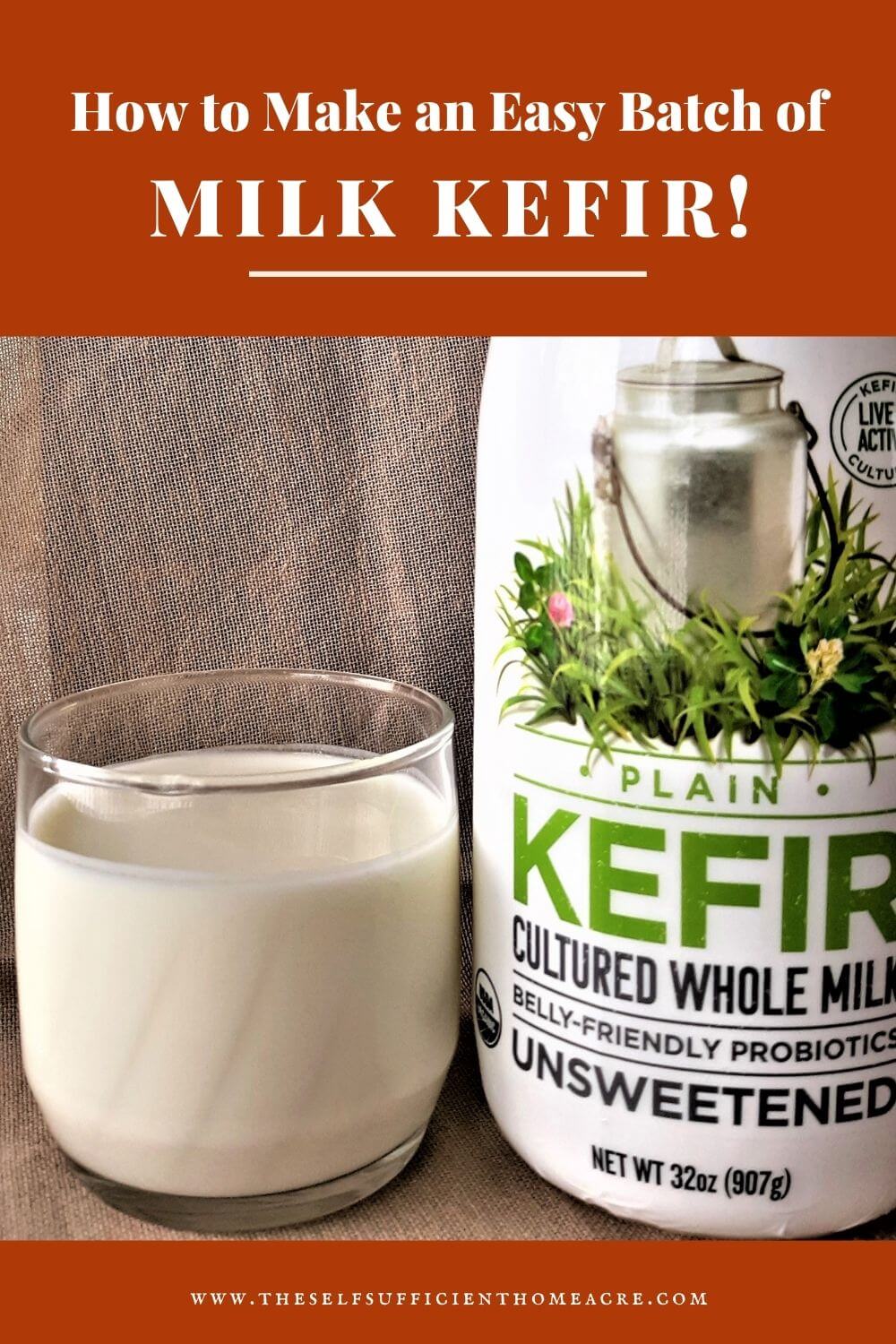Make Your Own Buttermilk and Buttermilk ‘Cheese’
You have that one recipe that calls for a cup of buttermilk, and you don’t feel like running to the store. Been there! It is super easy to make your own alternative in just a few minutes, or you can plan ahead and make a batch of the real cultured stuff. Maybe you’d like to try a batch of creamy, delicious cheese? I’ve got you covered…here are easy directions for all 3!
You can also make your own sour cream, cottage cheese, yogurt, and other dairy products at home!
Quick & Easy ‘Buttermilk’ for Baked Goods
Buttermilk has a higher acid content than regular milk, so it makes baked goods light and fluffy when combined with leavening (baking soda or baking powder). The chemical reaction causes gas bubbles to form in the batter…which makes your baked goods rise.
So what to do when a recipe calls for buttermilk, but you don’t have any? Here’s a quick alternative that works great in baked goods…
- 1 cup milk minus 1 tsp
- 1 tsp vinegar or lemon juice
Pour the vinegar of lemon juice into your measuring cup, then fill to the 1 cup mark with milk. Allow this to sit for a minute or two until the milk curdles.
Another option is to purchase a container of shelf-stable powdered buttermilk. This may be reconstituted according to the directions on the package.
As an Amazon affiliate, I earn a commission on qualifying purchases.
How to Make Cultured Buttermilk
To make cultured buttermilk, you’ll need to plan ahead. You can either make a batch using storebought buttermilk, or you can purchase a starter. For my buttermilk and cheese, I usually use store-bought buttermilk to culture a new batch.
Here are the instructions for using store-bought as culture…
- 1/4 cup cultured buttermilk
- 1 cup milk
Pour your milk into a saucepan and place it on medium heat. Warm to 180 degrees Fahrenheit and hold at that temperature for about 10 minutes to kill unwanted bacteria. Allow the milk to cool down to 70 to 77 degrees Fahrenheit.
Pour the ingredients into a clean glass container. Mix well and cover. Allow this to sit on the counter at room temperature (between 70-77 F) for 12 to 24 hours. It should be thick and ready to use in your recipes.
Problems: If your buttermilk has a slimy texture, there are a few things that can cause problems.
- culture was old
- temperatures were too warm or too cold
- your container wasn’t clean
- wild yeast or bacteria contaminated the milk
Cons – There are a couple of problems with this method. You need to have buttermilk on hand in order to make more…so plan to do a lot of baking! In addition, you might not be able to use your new batch to make more. Usually, the store bought cultures aren’t very long lived in subsequent batches.
If you want to make buttermilk that may be used to keep a culture living and producing new batches for a long time, you will have better luck with a purchased culture that comes in powder form.
As an Amazon Associate, I earn a commission from qualifying purchases.
Buttermilk Cheese Made In A Yogurt Maker
As I was experimenting with making homemade buttermilk, I accidentally found out how to make buttermilk cheese. I never even knew this was a thing, but now that I do…I love it!
There are a number of different recipes for making buttermilk cheese. Here’s what I did…
- 1-quart milk
- 1 cup cultured buttermilk
Pour ingredients into a nonreactive bowl that fits in your yogurt maker. Stir and leave in the yogurt maker for 24 hours or until the curds and whey have separated.
Place cheesecloth in a strainer and add mixture. Allow this to drain until the cheese reaches a thick consistency. We ate it like cream cheese, spread on toast or bread with some honey. You may also wrap yours in cheesecloth and add weight to press more moisture out for a harder cheese. Add herbs and salt for a savory treat!
Try These Frugal & Super Easy Recipes!
Even if you don’t have much time or money, you can make an inexpensive batch of buttermilk or cheese in your very own kitchen. I found a quart marked down to 50¢ at the store and used it to make 2 more quarts and a small batch of cheese. I think that’s pretty frugal. 🙂
As an Amazon Associate, I earn from qualifying purchases.
Condo Blues has a great idea for How to Make a Self-Watering Flower Pot!








Serving This Week 3-1 to 3-5-2021 On Tuesday was Avocado Breakfast Bake. Wednesday was Lil Leprechaun Snack Mix. Thursday was Green Pistachio Sweet Bread. And Friday was Crock Pot Corned Beef and Cabbage 2 Ways. Enjoy!
Lisa,
I truly appreciate you hosting each week! I understand how much time it takes to do so!! Thank you!!
Stay safe, healthy and happy!!
Hugs,
Debbie
Here in Israel I can’t always find the butter I like …so I make my own.
using 38% cream in my blender. I thought the left over liquid that comes out as a byproduct was buttermilk. I have used it in pancakes. If this not so what is it then. Skim milk? Would it be better to add a little vinegar to it.?
All the best
Shira
Hi Shira,
Traditionally buttermilk was exactly what you just described, the liquid that is left over after making butter. However, here in the US most people think of the buttermilk that is sold in stores… which is a cultured milk product that has a thicker texture and tangier flavor than traditional buttermilk. You can use your buttermilk left over after making butter in recipes that call for buttermilk! A couple tips to help you get the best results: if you are using an old recipe it probably is calling for the traditional buttermilk. If you are using a new recipe, it may be calling for the thicker product available in stores and you will most likely need less of the buttermilk left over after making butter… so add about 3/4 of the amount and then adjust if more liquid is needed.
I hope this helps!